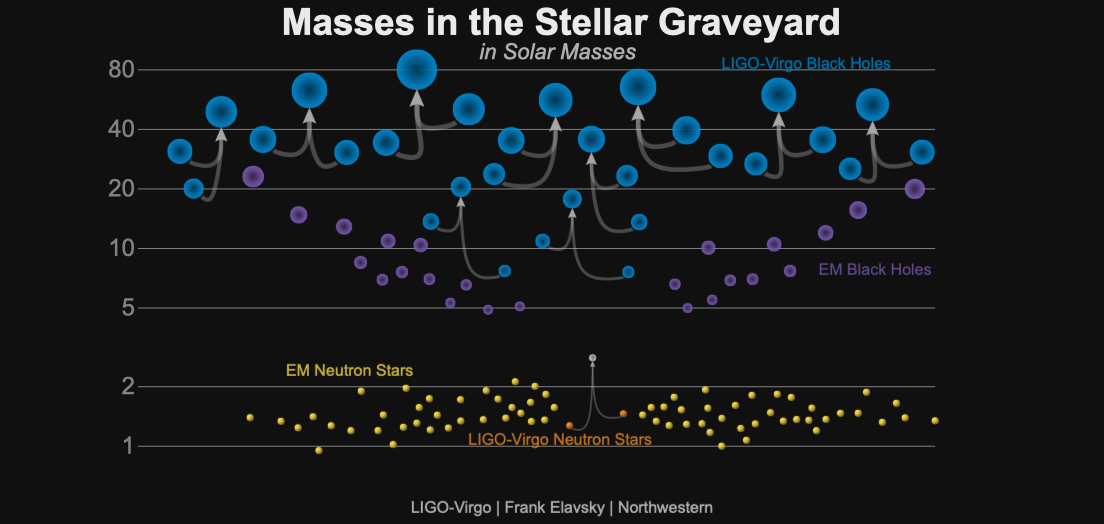
An eventful day for gravitational wave astronomy!
December 1 was an eventful day for gravitational wave astronomy as scientists attending the Gravitational Wave Physics and Astronomy Workshop in College Park, Maryland, presented new results from the National Science Foundation’s LIGO (Laser Interferometer Gravitational-Wave Observatory) and the European-based VIRGO gravitational-wave detector. The results were regarding their searches for merging cosmic objects such as pairs of black holes and pairs of neutron stars. The LIGO and Virgo collaborations have now confidently detected gravitational waves from 10 stellar-mass binary black hole mergers and one merger of neutron stars, which are the dense, spherical remains of stellar explosions. Six of the black hole merger events had been reported before, while four are newly announced!
Several Indian Gravitational-Wave researchers played important roles in these detections through the #IndIGO consortium, the Indian Initiative in Gravitational-wave Observations.
The second observing run, which ran from November 30, 2016 to August 25, 2017, yielded one binary neutron star merger and seven additional binary black hole mergers, including the four new gravitational-wave events being reported now! They are known as GW170729, GW170809, GW170818, and GW170823, in reference to the dates they were detected.
All these events are included in the new #o2catalog that was also released on Saturday! Some of these are record breaking events! For example, the new event GW170729, detected in the second observing run on July 29, 2017, is the most massive and distant gravitational-wave source ever observed! In this merger, which occurred roughly 5 billion years ago, an equivalent energy of almost five solar masses was converted into gravitational radiation!
GW170814 was the first binary black hole merger measured by the three-detector network, and allowed for the first tests of gravitational-wave polarisation (analogous to light polarisation).
The event GW170817, detected three days after GW170814, represented the first time that gravitational waves were ever observed from the merger of a binary neutron star system. What's more, this collision was seen in gravitational waves and light, marking an exciting new chapter in multi-messenger astronomy, in which cosmic objects are observed simultaneously in different forms of radiation.
One of the new events, GW170818, which was detected by the global network formed by the LIGO and Virgo observatories, was very precisely pinpointed in the sky. The position of the binary black holes, located 2.5 billion light-years from Earth, was identified in the sky with a precision of 39 square degrees. That makes it the next best localised gravitational-wave source after the GW170817 neutron star merger.
The scientific papers describing these new findings, which are being initially published on the arXiv repository of electronic preprints, present detailed information in the form of a catalog of all the gravitational wave detections and candidate events of the two observing runs as well as describing the characteristics of the merging black hole population. Most notably, we find that almost all black holes formed from stars are lighter than 45 times the mass of the Sun. Thanks to more advanced data processing and better calibration of the instruments, the accuracy of the astrophysical parameters of the previously announced events increased considerably.
As the results of the second observing run are released, all eyes are now on the third observing run which is starting in Spring 2019!
